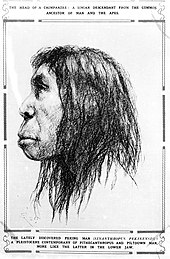泥河灣是河北省張家口市陽原縣一個小山村,古老的桑幹河自西向東流經陽原縣全境,泥河灣就坐落在桑幹河畔。泥河灣盆地又稱桑幹河盆地,發育有完好的第四紀地層。在泥河灣遺址群中,舊石器時代文化遺存數目驚人,陽原縣境內發現150餘處,蔚縣境內發現20餘處,其中有大量早更新世人類遺存。
自20世紀20年代被發現以來,泥河灣遺址已成為挑戰“人類非洲起源說”的重要區域之一。
泥河灣盆地為北東—南西向斷裂控製下的晚新生代山間盆地,基底主要由太古宙變質岩、元古宙碳酸鹽岩、寒武紀—奧陶紀沉積岩以及侏羅紀—新近紀火山沉積組合共同構成,盆地裏堆積巨厚的晚新生代河湖相沉積。20世紀初,法國人在泥河灣建立教堂傳經布道。1921年,文森特(Ernest Vincent)神父在其住宅附近發現了一些古生物化石,並告知正在籌建天津北疆博物院的法國地質學家、古生物學家桑誌華(Emile Licent)神父。泥河灣盆地中,階地發育,階麵寬闊平坦,第四紀地層齊全、出露廣泛、層次清晰。1924年,燕京大學地質教授、美國哥倫比亞大學地質學係講師巴爾博(George B. Barbour)踏勘泥河灣,將泥河灣村一帶發育的第四紀河湖相堆積命名為“泥河灣層”。
桑誌華先後六次到泥河灣考察發掘,在泥河灣、下沙溝等地發現大量動物化石。1927年,巴爾博和古生物學博士德日進(Pierre Telhard de Chardin)神父對泥河灣層作了分層記述,根據桑誌華的化石發現,介紹了哺乳動物化石的種類。1930年,德日進和皮孚陀(Jean Piveteau)在《泥河灣哺乳動物化石》中,對泥河灣層的哺乳動物化石進行了詳細研究,稱之為“泥河灣動物群”,並首次提出泥河灣盆地更新世初期人類活動的可能性:“我們需要直接的證據來證明,當最後三趾馬經常來喝泥河灣湖水的時侯,中國就有了人類。”西方學者對古哺乳動物和地層的研究,確立了泥河灣層的科學價值和國際地位,1948年第18屆國際地質學會把泥河灣層作為華北第四紀初期標準地層之一。從此,泥河灣層成為世界考古界的專用名詞。
-------------
迄今全世界100萬年以上的早期人類文化遺存目前發現53處,陽原泥河灣遺址群就占40處,其中馬圈溝遺址距今200萬年,推判泥河灣遺址可能是東亞人種的起源地,向非洲起源學說提出了挑戰。
泥河灣遺址又稱泥河灣遺址群,位於中國河北省張家口市陽原縣境內東部地區的桑幹河流域,內有多處舊石器時代遺址。 從1970年代開始,在陽原東西長82公裏、南北寬27公裏的廣大區域內,陸續發現早期人類遺址共80多處。
泥河灣遺跡群(でいかわんいせきぐん)は、中國の河北省張家口市陽原県東部の桑乾河北岸にある舊石器時代の遺跡群。馬圏溝遺跡?小長梁遺跡?侯家窯遺跡?虎頭梁遺跡などを一括して指す。
1978年、陽原県泥河灣郷(現在の化稍営鎮)付近で大量の舊石器と哺乳動物の化石が発見された。およそ200萬年前の人類の生活遺跡と推定されている。
------------------
-------------

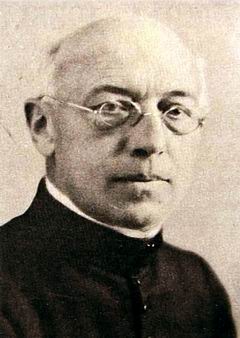
Émile Licent (1876–1952; with the adopted Chinese name, 桑誌華, while he was working in China) was a French Jesuit trained as a natural historian
Upon his first arrival at Tianjin in 1914, he established the Musée Hoangho Paiho (it was known as the 'Beijiang Museum' among the Chinese), one of the earliest of its kind in China. The Museum survived the Second World War and changed its name to Tianjin Natural History Museum (TMNH) in 1952.[3] He was a colleague ofPierre Teilhard de Chardin in conducting archeological research in northern provinces of China in the 1920s.[4]He and Chardin were the first to examine the Shuidonggou (水洞溝) (Ordos Upland, Inner Mongolia) archaeological site in northern China.[5] Resent analysis of flaked stone artifacts from the most recent (1980) excavation at this site has identified an assemblage which constitutes the southern most occurrence of an Initial Upper Paleolithic blade technology proposed to have originated in the Altai region of Southern Siberia. The lowest levels of the site are now dated from 40,000 to 25,000 years ago.
He left China during the Second World War in 1939 after appointing one of his colleagues, Pierre Leroy (adopted Chinese name, 羅學賓), as Deputy Director of the Museum. Most of the Quaternary mammal fossils and prehistoric human relics and tools that he and his colleagues discovered remain in the Museum.
He was awarded an Order (鐵十字騎士勳章) by the French government for his pioneering scientific works and explorations in China.
Nothing much is known about his life or religious activities in France before and after his stay in China.
--------


Pierre Teilhard de Chardin SJ (French: [pj?? teja? d? ?a?d??] ( listen (help·info)); 1 May 1881 – 10 April 1955) was a French idealist philosopher and Jesuitpriest who trained as a paleontologist and geologistand took part in the discovery of Peking Man.
listen (help·info)); 1 May 1881 – 10 April 1955) was a French idealist philosopher and Jesuitpriest who trained as a paleontologist and geologistand took part in the discovery of Peking Man.
Research in China[edit]
In 1923 he traveled to China with Father Emile Licent, who was in charge of a significant laboratory collaboration between the Natural History Museum in Paris and Marcellin Boule's laboratory in Tientsin. Licent carried out considerable basic work in connection with missionaries who accumulated observations of a scientific nature in their spare time.
Teilhard wrote several essays, including La Messe sur le Monde (the Mass on the World), in the Ordos Desert. In the following year, he continued lecturing at the Catholic Institute and participated in a cycle of conferences for the students of the Engineers' Schools. Two theological essays on Original Sin were sent to a theologian at his request on a purely personal basis:
- July 1920: Chute, Rédemption et Géocentrie (Fall, Redemption and Geocentry)
- Spring 1922: Notes sur quelques représentations historiques possibles du Péché originel(Note on Some Possible Historical Representations of Original Sin) (Works, Tome X)
The Church required him to give up his lecturing at the Catholic Institute in order to continue his geological research in China.
Teilhard traveled again to China in April 1926. He would remain there for about twenty years, with many voyages throughout the world. He settled until 1932 in Tientsin with Emile Licent, then in Beijing. Teilhard made five geological research expeditions in China between 1926 and 1935. They enabled him to establish a general geological map of China. That same year, Teilhard's superiors in the Jesuit Order forbade him to teach any longer.
In 1926–27, after a missed campaign in Gansu, Teilhard traveled in the Sang-Kan-Ho valley near Kalgan (Zhangjiakou) and made a tour in Eastern Mongolia. He wrote Le Milieu Divin (The Divine Milieu). Teilhard prepared the first pages of his main work Le Phénomène Humain (The Phenomenon of Man). The Holy See refused the Imprimatur for Le Milieu Divin in 1927.
He joined the ongoing excavations of the Peking Man Site atZhoukoudian as an advisor in 1926 and continued in the role for the Cenozoic Research Laboratory of the Geological Survey of China following its founding in 1928. Teilhard resided inManchuria with Emile Licent, staying in Western Shansi (Shanxi) and northern Shensi (Shaanxi) with the Chinese paleontologistC. C. Young and with Davidson Black, Chairman of theGeological Survey of China.
After a tour in Manchuria in the area of Great Khingan with Chinese geologists, Teilhard joined the team of American Expedition Center-Asia in the Gobi Desert, organized in June and July by the American Museum of Natural History with Roy Chapman Andrews. Henri Breuil and Teilhard discovered that the Peking Man, the nearest relative of Pithecanthropus fromJava, was a faber (worker of stones and controller of fire). Teilhard wrote L'Esprit de la Terre (The Spirit of the Earth).
Teilhard took part as a scientist in the Croisière Jaune (Yellow Cruise) financed by André Citroën in Central Asia. Northwest of Beijing in Kalgan, he joined the Chinese group who joined the second part of the team, the Pamir group, in Aksu. He remained with his colleagues for several months in Ürümqi, capital of Sinkiang. The following year the Sino-Japanese War (1937–1945) began.
In 1933, Rome ordered him to give up his post in Paris. Teilhard subsequently undertook several explorations in the south of China. He traveled in the valleys of Yangtze River and Sichuan in 1934, then, the following year, in Kwang-If and Guangdong. The relationship with Marcellin Boule was disrupted; the museum cut its financing on the grounds that Teilhard worked more for the Chinese Geological Service than for the museum.[citation needed]
During all these years, Teilhard contributed considerably to the constitution of an international network of research in human paleontology related to the whole of eastern and southeastern Asia. He would be particularly associated in this task with two friends, the English/Canadian Davidson Black and the Scot George Brown Barbour. Often he would visit France or the United States, only to leave these countries for further expeditions.
During 1930–1931, Teilhard stayed in France and in the United States. During a conference in Paris, Teilhard stated: "For the observers of the Future, the greatest event will be the sudden appearance of a collective humane conscience and a human work to make." From 1932–1933, he began to meet people to clarify issues with the Congregation for the Doctrine of the Faith, regarding Le Milieu divin andL'Esprit de la Terre. He met Helmut de Terra, a German geologist in the International Geology Congress in Washington, DC.
Teilhard was nominated to the French Academy of Sciences in 1950.
Teilhard died in New York City, where he was in residence at the Jesuit Church of St. Ignatius Loyola,Park Avenue. On 15 March 1955, at the house of his diplomat cousin Jean de Lagarde, Teilhard told friends he hoped he would die on Easter Sunday.[10] On the evening of Easter Sunday, 10 April 1955, during an animated discussion at the apartment of Rhoda de Terra, his personal assistant since 1949, Teilhard suffered a heart attack and died.[10] He was buried in the cemetery for the New York Province of the Jesuits at the Jesuit novitiate, St. Andrew-on-Hudson, in Hyde Park, New York,[11] With the moving of the novitiate, the property was sold to the Culinary Institute of America in 1970.

----------

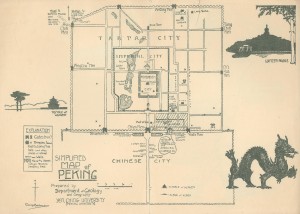
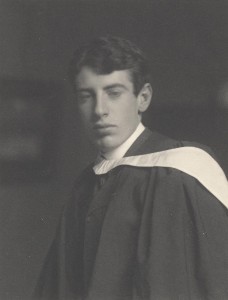
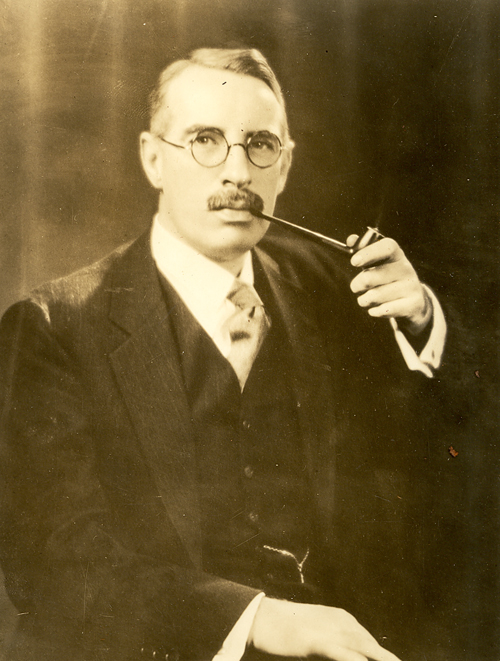 1920
1920
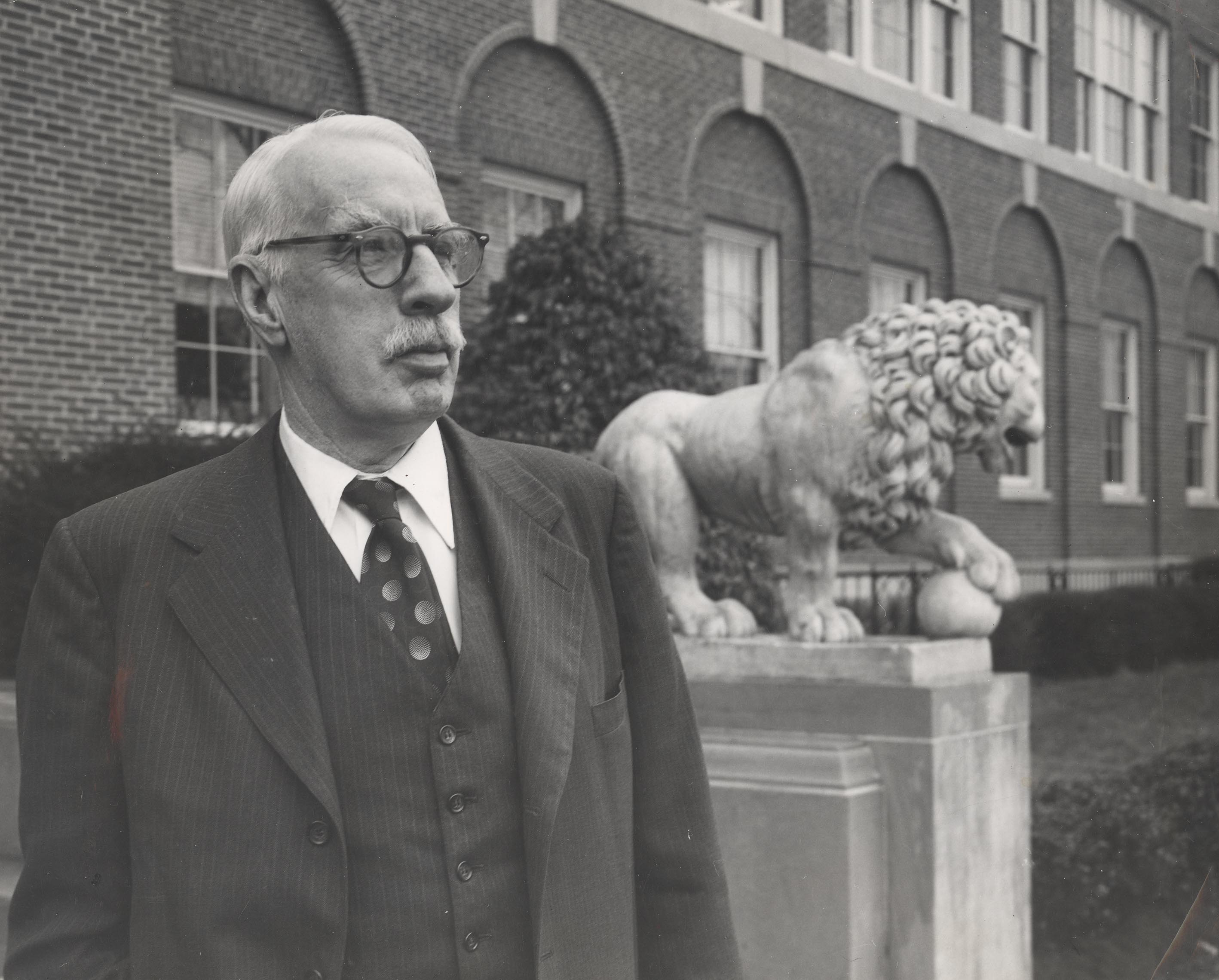
George Brown Barbour FGS FRSE FRSSA (1890–1977) was an internationally renowned Scottish geologist and educator.
He graduated from Cambridge in 1918.
In 1919 he travelled to America to attend Columbia University in New York. Here he met Dorothy Dickinson, whom he married in a small ceremony at her summer home, "Kakro", in Westhampton Beach, Long Island on 15 May 1920. She was from a very well-connected Christian family.
Together they then travelled to China (his wife having the intention to act as a Christian missionary[2]) where he then became Professor of Applied Geology at Yenching University (in Peking) from 1920 to 1922. In 1922 and 1923 he was Head of Geology at Peiyang University in Tientsin. Then returning to Yenching as Professor of Geology from 1923 to 1932.[3] During his time in China he served on the staff of the Chinese Geological Survey's Cenozoic Laboratory and was intimately associated with the discovery and dating of Peking Man.[4]
During this period based in China, he communicated with Columbia University, who in 1929 awarded him, in-absentia, a PhD in his field.
In 1932 he left China, as their eldest son Hugh and contracted Peking fever. Return to China then proved impossible due to the ongoing cultural revolution. They settled temporarily inCincinnati where he took the role of Professor of Geology at Cincinnati University for one year.
In 1934 the Rockefeller Foundation offered him a grant to return to China, but as this did not include visas for his family he declined and instead took up a two-year role lecturing in geology at the University of London, back in Britain.
He returned to Cincinnati in 1937 as associate professor. In 1938 he became Dean of the College of Arts and Sciences, but resigned the position in 1958 to return to teaching geology, a work for which he had great enthusiasm and in which he was distinguished.
In 1960 he retired as emeritus professor of geology and dean emeritus of the College of Arts and Sciences in Cincinnati. After retirement he taught at some other American universities.
Barbour continued to travel the world on important geological expeditions in many parts of the world, notably in China, Mongolia, and Africa.
He spent a number of summers on expeditions in Africa searching for remains of prehistoric man. His work there after 1947 centered on the prehistoric Men-Apes of the Transvaal veldt. For his scientific contributions on four continents, he was honored by the British and the Belgian Royal Geographic Society, Royal Society of South Africa and of Edinburgh, Geological Society of South Africa, and the Italian Institute of Human Paleontology. He was honorary lecturer at the University of London and guest lecturer at the University of Witwatersand, South Africa.
He attended international geological congresses in the United States, Moscow, London, Algiers, and Mexico City, and two Pan-American congresses.
He died peacefully in his sleep, at home in Cincinnati on 11 July 1977, aged 86.
===============
CINCINNATI, July 12—Dr. George B. Barbour, internationally known geologist and educator, died in his sleep last night. He was 86 years old.
